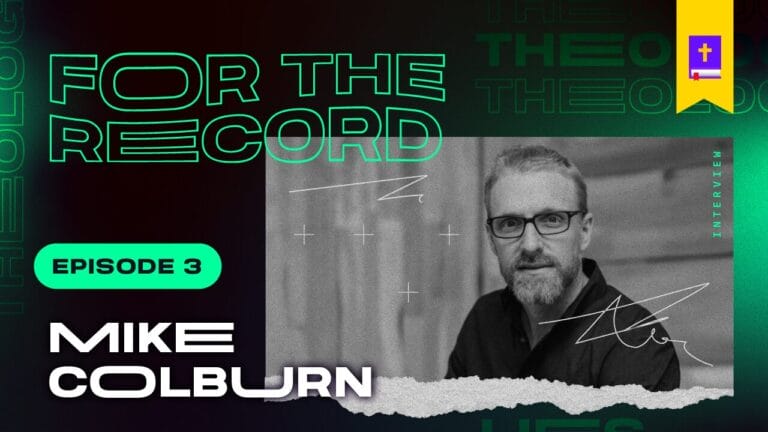Last Generation Theology (LGT) is a divisive subject within Adventism that is built upon the belief that the Second Coming of Christ is predicated upon enough Seventh-Day Adventist’s getting to a totally sinless state and vindicating the character of God in the great controversy. It was systematized by 20th century SDA theologian M.L. Andreasen.
Speaking on his influence, SDA historian George R. Knight writes:
It is impossible to overestimate the influence of M.L. Andreasen on twentieth-century Adventist theology. His theological package is so central to modern Adventist development that a person is forced to respond in one way or another to it. Individuals and groups within the church either agree with his theology or they must react against it. Neutrality is not an option for those who understand his teachings.
George R. Knight, A Search for Identity: The Development of Seventh-day Adventist Beliefs, pg. 144
Andreason’s areas of focus particularly centered around the SDA doctrines of the Sanctuary and the Atonement—with his foremost contribution being Last Generation Theology which was systematized and developed by 1937 and published in his book Sanctuary Service.
The central statement from Ellen G. White that fuels this belief is from Christ Object Lessons where she stated:
Christ is waiting with longing desire for the manifestation of Himself in His church. When the character of Christ shall be perfectly reproduced in His people, then He will come to claim them as His own.
Ellen G. White, Christ Object Lessons, pg. 69
This systematization by Andreason was built upon the foundation that A.T. Jones, E.J. Waggoner, and William Warren Prescott laid in the 1880s regarding Jesus incarnating in fallen, sinful flesh identical to Adam after the fall with all of it’s sinful tendencies. This was how, in the great controversy, Jesus can truly be the perfect example for sinners showing that they can live a totally sinless life despite having fallen, sinful flesh. This is actually necessary because the great controversy supposedly centers around God silencing accusations from Satan that fallen sinners can’t keep God’s law perfectly.
Another key component to Andreason’s Last Generation Theology was the belief that the atonement was not completed at the cross—which was built upon statements from Ellen White as well as the foundation laid by Hiram Edson in 1844. This was also in line with 19th century SDA thought leaders like Uriah Smith wrote, in the church’s paper:
The death of Christ and the atonement are not the same thing. And this relieves matter of all difficulty. Christ did not make atonement when He shed his blood upon the cross. Let this fact be fixed forever in the mind.
Uriah Smith, Advent Review & Sabbath Herald, October 19, 1876
Andreason asserted that the atonement really had three phases:
- Christ’s perfect life
- Christ on the cross
- Christ demonstrating that man can do what He did with the same help He had which also includes the work of investigative judgment currently taking place in heaven allegedly.
It is through this final phase of heavenly atoning work that he believed Christ was eliminating and destroying sin on the earth. Speaking of this, he writes:
The final demonstration of what the gospel can do in and for humanity is still in the future. Christ showed the way. He took a human body, and in that body demonstrated the power of God. Men are to follow His example and prove that what God did in Christ, He can do in every human being who submits to Him. The world is awaiting this demonstration (Romans 8:19). When it has been accomplished, the end will come. God will have fulfilled His plan. He will have shown Himself true and Satan a liar. His government will stand vindicated.
M.L. Andreason, The Sanctuary Service, pg. 299
He continues by saying:
Thus it shall be with the last generation of men living on the earth. Through them God’s final demonstration of what He can do with humanity will be given. He will take the weakest of the weak, those bearing the sins of their forefathers, and in them show the power of God. They will be subjected to every temptation, but they will not yield. They will demonstrate that it is possible to live without sin-the very demonstration for which the world has been looking and for which God has been preparing. It will become evident to all that the gospel really can save to the uttermost. God is found true in His sayings.
M.L. Andreason, The Sanctuary Service, pg. 302
This “last generation” of Adventists are central to the Great Controversy Worldview and system. They hold a central spot in the controversy between Christ and Satan and they themselves play a role in the atonement as a part of the third and final phase.
He also writes:
In the last generation God gives the final demonstration that men can keep the law of God and that they can live without sinning. God leaves nothing undone to make the demonstration complete. The only limitation put upon Satan is that he may not kill the saints of God. He may tempt them, he may harass and threaten them; and he does his best. But he fails. He cannot make them sin. They stand the test, and God puts His seal upon them.
M.L. Andreason, The Sanctuary Service, pg. 319
It was this theology that spread like wildfire within Adventism through the 1940s and 50s leading to a split within the denomination that still stands to this day.
The problem is Andreason’s systematic representation was built upon statements from Ellen G. White who the SDA Church believes was divinely inspired and correct inaccurate interpretations of scripture.
It was Ellen White that wrote that man would have to be found in a totally sinless condition identical to Jesus’s if they wanted to make it through the Time of Trouble and receive the seal of God. It was Ellen White that claimed Jesus had a “fallen, sinful nature” like any other human being. It was Ellen White that said one will have to get to a completely sinless state before the close of human probation in order to stand before God without a mediator. It was Ellen White who claimed that the crucifixion marks of Christ will forever testify that keeping the law perfectly is possible.
It was Ellen White who claimed that one spot or blemish upon the character would keep one from receiving the seal of God and close the gates of heaven for someone. It was Ellen White that claimed the atonement wasn’t completed at the cross which is why there is a “second phase” happening in heaven. And it was Ellen that plainly said Jesus won’t return until enough Seventh-Day Adventists perfectly reproduce the character of Christ and vindicate God’s character before the world.
Yet people like George Knight criticize Andreason for his system by saying things such as:
Its strong points [Last Generation Theology] were its concern with sanctification, its insight that God’s justification in the eyes of the universe is more important than the justification of individuals, and its understanding that Satan accuses God of created a law that no human could obey.
It is at that last point that the weaknesses of Andreason’s argument begins to show up. Midway through his chapter, for example, he argues that “it is necessary for God to produce at least one man who has kept the law. In the absence of such a man, God loses and Satan wins” (pg. 316). One finds it difficult to understand why Andreason put those sentences in his chapter because they undermine everything else he says. After all, that one man was Christ. Jesus did fully keep the law.
Thus it was possible for Him to become the spotless Lamb of Calvary. With that point Andreason is on solid ground. But, unfortunately, that is not what His final generation chapter is all about.
George R. Knight, A Search for Identity: The Development of Seventh-day Adventist Beliefs, pg. 149-50
It isn’t difficult to understand at all, but it is understandable why Mr. Knight might think so considering Ellen White was oftentimes a mess of contradictions and inconsistencies. Andreason simply constructed and presented what was consistent with the Great Controversy Worldview and Ellen White’s own writings and claims.
Knight provides a perfect example of the modern SDA disagreement with Andreason and showcases the standard objection to Last Generation Theology—man being required to be totally sinless in order to be saved. Yet that is consistent with the SDA Church’s divinely inspired prophetess who holds more authority than any past or present Seventh-Day Adventist.
Is it any wonder that Seventh-Day Adventist theology is such a confusing maze to navigate? Yet they tell us that this type of confusion is supposed to be relegated to “Babylon”—something the SDA Church is supposed to be immune from.










